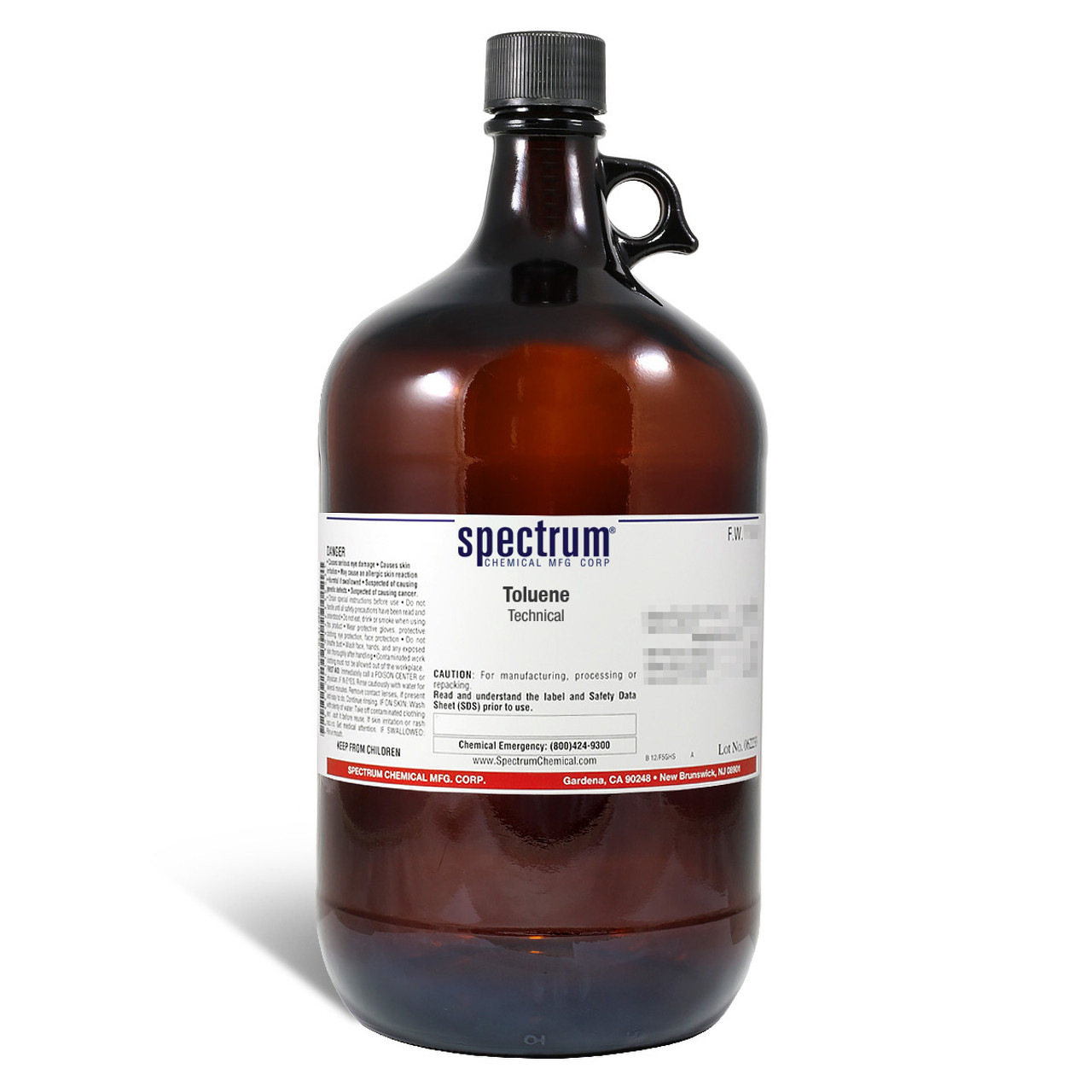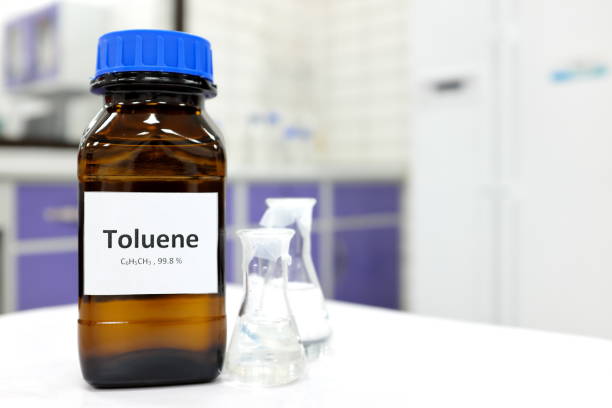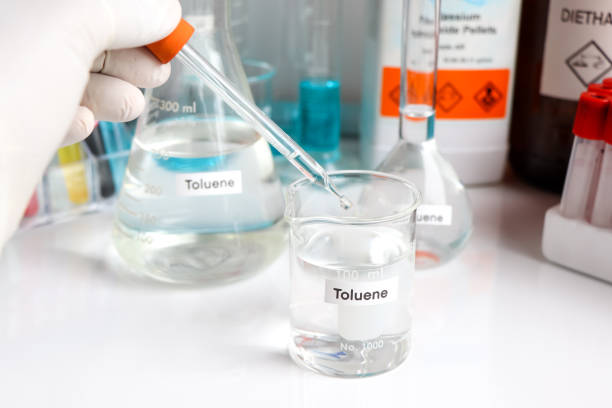Toluene Product
Toluene, also known as toluol, is a substituted aromatic hydrocarbon. It is a colorless, water-insoluble liquid with the smell associated with paint thinners. It is a mono-substituted benzene derivative, consisting of a methyl group attached to a phenyl group. As such, its systematic IUPAC name is methylbenzene.

- Overview
- Application
- Spesification
Toluene (/ˈtɒl.juiːn/), also known as toluol (/ˈtɒl.ju.ɒl, -ɔːl, -oʊl/), is a substituted aromatic hydrocarbon. It is a colorless, water-insoluble liquid with the smell associated with paint thinners. It is a mono-substituted benzene derivative, consisting of a methyl group (CH3) attached to a phenyl group. As such, its systematic IUPAC name is methylbenzene. Toluene is predominantly used as an industrial feedstock and a solvent. As the solvent in some types of paint thinner, permanent markers, contact cement and certain types of glue, toluene is sometimes used as a recreational inhalant and has the potential of causing severe neurological harm.
The compound was first isolated in 1837 through a distillation of pine oil by Pierre Joseph Pelletier and Filip Neriusz Walter, who named it rétinnaphte. In 1841, Henri Étienne Sainte-Claire Deville isolated a hydrocarbon from balsam of Tolu (an aromatic extract from the tropical Colombian tree Myroxylon balsamum), which Deville recognized as similar to Walter's rétinnaphte and to benzene; hence he called the new hydrocarbon benzoène. In 1843, Jöns Jacob Berzelius recommended the name toluin. In 1850, French chemist Auguste Cahours isolated from a distillate of wood a hydrocarbon which he recognized as similar to Deville's benzoène and which Cahours named toluène.
Production
Toluene occurs naturally at low levels in crude oil and is a by product in the production of gasoline by a catalytic reformer or ethylene cracker. It is also a by product of the production of coke from coal. Final separation and purification is done by any of the distillation or solvent extraction processes used for BTX aromatics (benzene, toluene, and xylene isomers). Other preparative routes Toluene can be prepared by a variety of methods. For example, benzene reacts with methanol in presence of a solid acid to give toluene:
- C6H6+CH3OH→C6H5CH3+H2O
Toluene occurs naturally at low levels in crude oil and is usually produced in the processes of making gasoline via a catalytic reformer, in an ethylene cracker or making coke from coal. Final separation (either via distillation or solvent extraction) takes place in a BTX plant.
USES
Toluene is a common solvent, able to dissolve: paints, paint thinners, many chemical reactants, rubber, printing ink, adhesives (glues), lacquers, leather tanners, and disinfectants. It can also be used as a fullerene indicator, and is a raw material for toluene diisocyanate (used in the manufacture of polyurethane foam) and TNT. Industrial uses of toluene include dealkylation to benzene and disproportionation to a mixture of benzene and xylene. When oxidized it yields benzaldehyde and benzoic acid, two important intermediates in chemistry.
Toluene can be used as an octane booster in gasoline fuels used in internal combustion engines. Toluene at 84% by volume, fueled all the turbo Formula 1 teams in the 1980s.It is also used as a carbon source for making Multi-Wall Carbon Nanotubes. Toluene can be used to break open red blood cells in order to extract hemoglobin in biochemistry experiments.
TOXICOLOGY AND METABOLISM
Inhalation of toluene fumes can be intoxicating, but in larger doses nausea-inducing. Toluene may enter the human system not only through vapour inhalation from the liquid evaporation, but also following soil contamination events, where human contact with soil, ingestion of contaminated groundwater or soil vapour off-gassing can occur.
The toxicity of toluene can be explained mostly by its metabolism. As toluene has very low water solubility, it cannot exit the body via the normal routes (urine, feces, or sweat) It must be metabolized in order to be excreted. The methyl group of toluene is more easily oxidized by cytochrome P450 than the benzene ring. Therefore, in the metabolism of toluene, 95% is oxidized to become benzyl alcohol. The toxic metabolites are created by the remaining 5% that are oxidized to benzaldehyde and cresols.
| PRODUCT IDENTIFICATION | ||
| CAS NO. | : | 108-88-3 |
| MOL WT. | : | 92.14 |
| Chemical Formula | : | C6H5-CH3 |
| SYNONYMS | : | Methylbenzene; Toluol; Phenylmethane |
| CHEMICAL AND CHEMICAL PROPERTIES | ||
| PHYSICAL STATE | : | Clear, colorless liquid. |
| Odor | : | Aromatic benzene-like. |
| Boiling Point | : | 111C (232F) |
| Melting Point | : | -95C (-139F) |
| Vapor Density (Air=1) | : | 3.14 |
| Specific Gravity | : | 0.86 @ 20C / 4 C/td> |
| Vapor Pressure (mm Hg) | : | 22 @ 20C (68F) |
| FRIST AID MEASURES | ||
| Inhalation: If inhaled, remove to fresh air. If not breathing, give artificial respiration. If breathing is difficult, give oxygen. CALL A PHYSICIAN IMMEDIATELY. | ||
| Ingestion: Aspiration hazard. If swallowed, DO NOT INDUCE VOMITING. Give large quantities of water. Never give anything by mouth to an unconscious person. Get medical attention immediately. If vomiting occurs, keep head below hips to prevent aspiration into lungs. | ||
| Skin Contact: In case of contact, immediately flush skin with plenty of soap and water for at least 15 minutes while removing contaminated clothing and shoes. Wash clothing before reuse. Call a physician immediately. | ||
| Eye Contact: Immediately flush eyes with plenty of water for at least 15 minutes, lifting lower and upper eyelids occasionally. Get medical attention immediately. | ||







![{\displaystyle {\ce {C6H6 + CH3OH ->[t^o]C6H5CH3 + H2O}}}](https://wikimedia.org/api/rest_v1/media/math/render/svg/b6cd1c2e0452714547fc7f9b995f21c2ab391336)